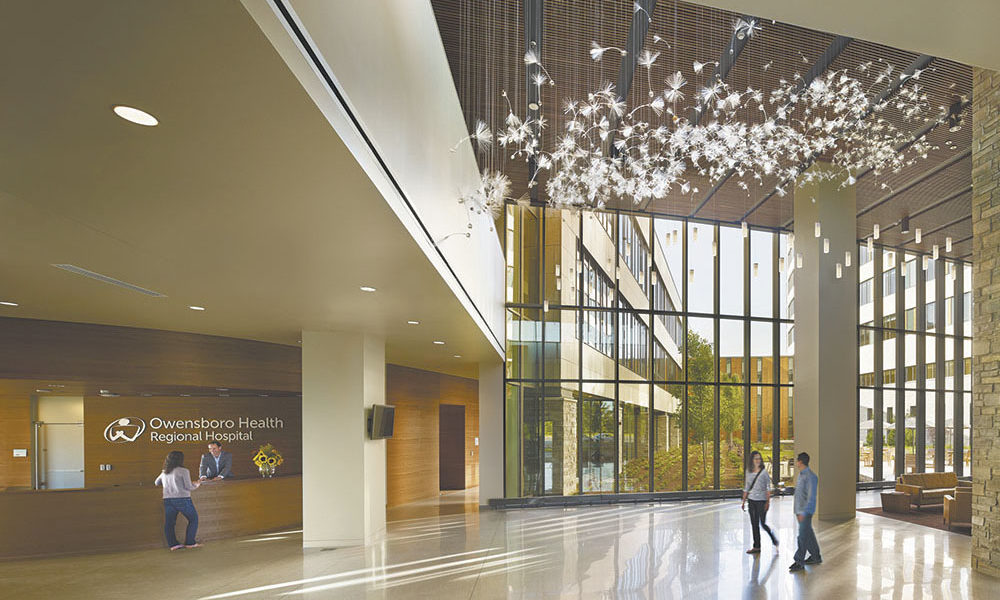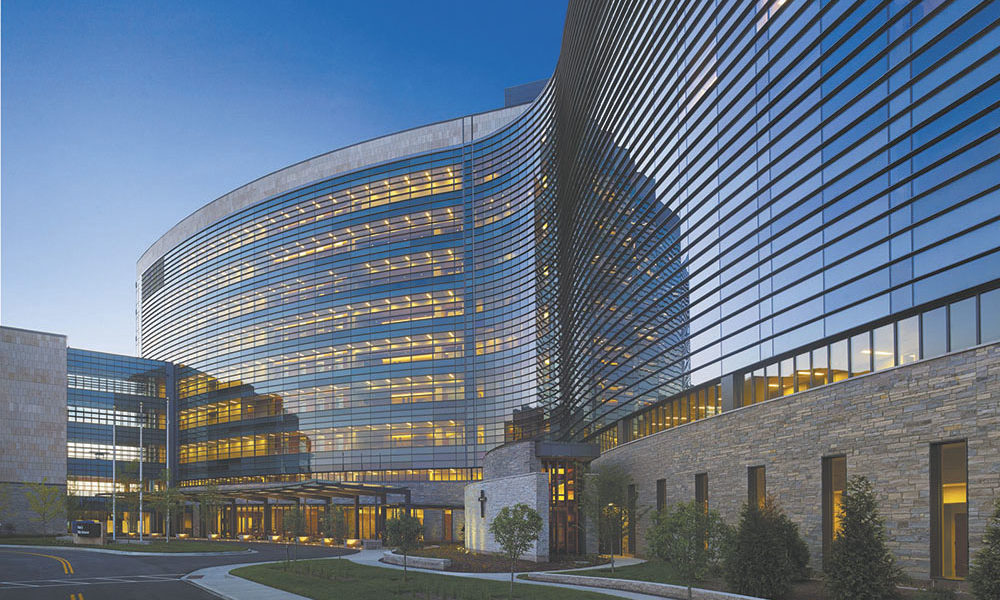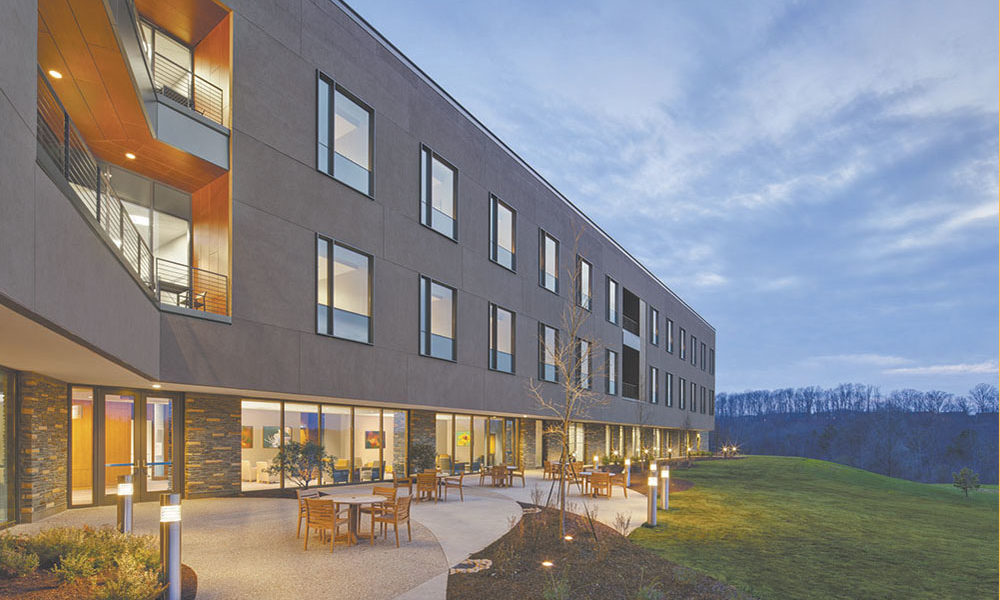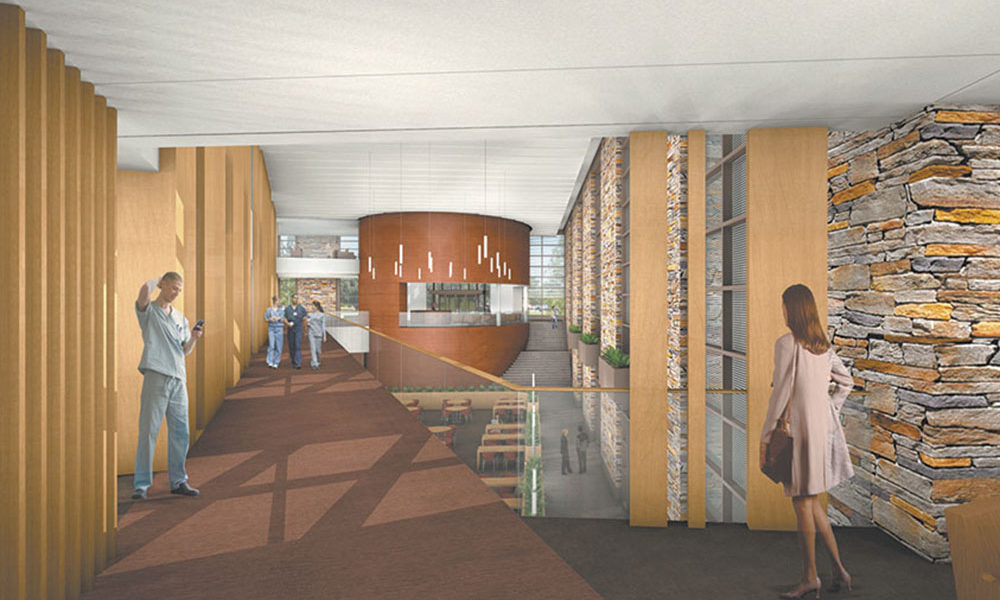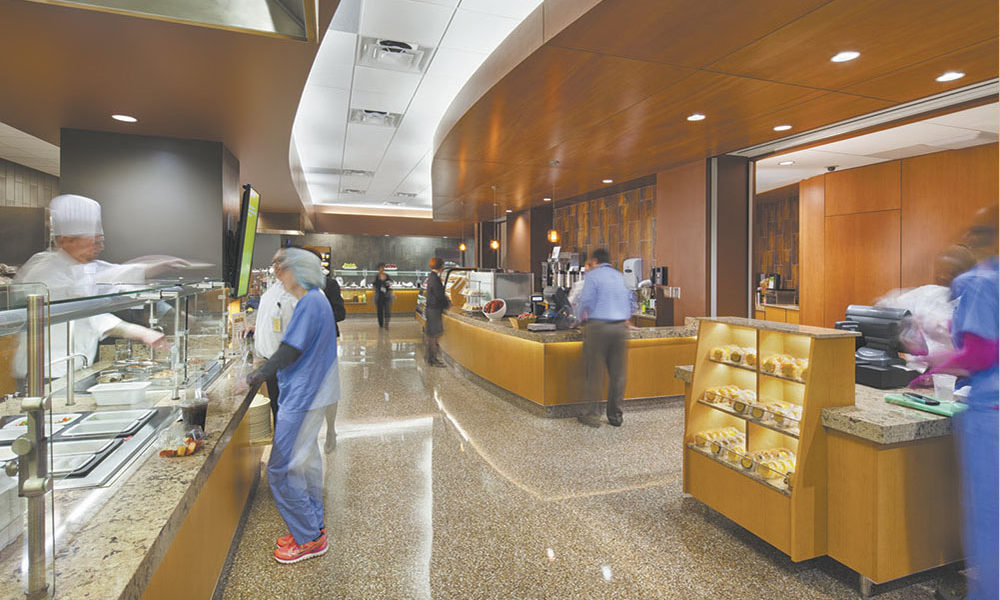Planning: Integrating Keystone Experiences Into Holistic Design
By Kurt Spiering
Healthcare facility planning often focuses on programming, operations and patient safety as planners benchmark metrics to improve workflows and clinical outcomes. Rarely do patients’ emotions enter the planning equation. Yet a growing emphasis on wellness and the patient experience is adding new dimensions to the planning process as research links design to emotional well-being and clinical outcomes.
Many people enter a hospital for an urgent need. Yet once there, many design elements can help lessen the emotional stress and heighten well-being. Planning around keystone experiences can help gain deeper insight into patients’ emotional needs in highly stressful situations and result in holistic interiors that support workflow efficiency, clinical outcomes and human well-being.
Identifying keystone experiences
Keystone experiences resonate with people intuitively upon approaching a healthcare facility, such as a sense of safety, cleanliness, warmth, comfort and quality of care as they access the services through three primary access points — outpatient, inpatient and urgent care.
Planning around keystone experiences begins by identifying positive patient experiences in the early planning stage. Each hospital is different and each community is different as keystone experiences reflect regional variations. Rather than think of keystone experiences as a planning add-on, consider keystone experiences integral to benchmarking data that feeds into the planning and design process.
Keystone experiences can be identified through a series of interactive workshops, in which select hospital staff, including doctors, nurses and administrators and design team members interview patients and community members to record experiences and wish-list items. By using a patient-journal toolkit that includes several research techniques (interview questions, photo journaling, shadowing and storytelling), participants can record patients’ reactions through all stages of the healthcare journey, including:
Understanding: What is the patient’s relationship with the hospital prior to check-in?
Entry: How should the patient access services?
Assessment: How should decisions be made regarding the patient’s care?
Treatment: How should the experience of receiving, evaluating and adjusting treatment be handled?
Transition: How is the patient prepared for checkout?
In post-interview sessions, staff members and design team members then itemize and benchmark top-level experiences that can serve as guideposts for design. For instance, comments such as a need for clear wayfinding, places for quiet respite, a connection to nature and plenty of natural light, may come out of the workshops.
Applying keystone experiences
Two recently completed hospitals have integrated keystone experiences into the planning process to create holistic environments that engage the community.
Owensboro Health Regional Hospital planned its 780,000-square-foot, 477-bed replacement hospital around workflow efficiency and the ideal patient experience on a 162-acre site in Owensboro, Kentucky.
To identify hospital, community and patient needs, three interactive workshops were facilitated with 100 people grouped into 10 task forces using a patient journal handbook. Hospital staff, physicians, administrators and community members volunteered to interview and observe patients, families and other staff members to explore positive and negative experiences in a healthcare environment. In post-interview meetings, the team categorized the feedback, translated them into narratives that captured the ideal day-in-the-life patient experience and re-enacted experiences in skits to formulate a vision for design.
Experiences important to patients included campus entry and easy navigation to designated parking, clear and identifiable inpatient/outpatient entries, concierge services in the main lobby, front door visibility of retail services and dining, single point-of-access for all diagnostic services, dedicated women’s services entry and emphasis on patient and family integration and comfort. Specific details to these touchpoints translated into the final design.
For instance, the hospital emerges in the distance through tall wetland grasses and tree allées to signify circulation paths — answering patients’ desires for a restorative, natural setting upon approach. A clearly defined entry along an undulating façade leads to a soaring, two-story lobby flooded with natural light and trimmed in indigenous stone. Large lobby windows and ample corridor windows overlook courtyards, gardens and other green spaces to offer visual and physical respite. A cafeteria overlooks an exterior courtyard and provides easy access to the outside — further connecting the interior to the exterior. Every floor offers patients and families exterior views of the lush campus. Family spaces provide a place for visitors to relax in the inpatient room. A rooftop garden further extends the healing benefits of nature.
Similarly at Northeast Georgia Medical Center Braselton, hospital leadership held five public forums and several interactive workshops to plan the 100-bed hospital on a 119-acre campus.
The design team captured stories about primary service lines to be provided in the new facility, which offered insight into the different physical, emotional and cultural requirements of patients and community. Community members expressed a desire for the hospital to embrace the natural setting, have beautiful views from every inpatient room, incorporate indigenous materials, offer organic, chef-prepared food in the cafeteria and serve as a destination healthcare center and community beacon.
As with Owensboro, these needs served as a guidepost throughout the design and planning process.
For instance, the campus setting includes extensive planting, gardens and water features to offer patients physical and visual connections to nature. Visitors enter a central rotunda clad in natural wood and locally quarried Georgia stone, which also is used throughout the common areas. The interior is infused with natural light and visually connects to the landscaped campus, from views of the shaded courtyard outside the dining atrium to vistas of wetlands from private patient rooms. Multiple access points encourage people to venture outdoors and experience the peaceful campus landscaping. The café features high-end finishes in a cafeteria format that has actually become a dining destination for the local community seeking healthy, chef-prepared food. Overall, the use of regional material, connection to nature and natural daylight humanizes the interior experience.
The industry increasingly is focusing on how architecture and interior spaces impact holistically — merging health, productivity and well-being. The new WELL Building Standard administered by the International WELL Building Institute outlines seven concepts for healthy building design. Nowhere is the concept of healthy building design more important than healthcare — which is in the business of promoting health.
Keystone experiences humanize the complex, program-driven nature of healthcare facilities. By including patients and community members in the planning process, healthcare organizations can identify important attributes that contribute to patients’ emotional well-being, promote healthy building interiors and reinforce a sense of ownership and pride for the community.
Author: Kurt Spiering
Kurt Spiering, AIA, ACHA, is vice president and market sector leader of the Healthcare Practice Group at HGA Architects and Engineers.
Owensboro: Halkin Mason Photography; NGMC images: Darris Lee Harris
Posted June 30, 2016
More Articles:
- The Disruptive Force of Technology Changing The Future Face of Healthcare
- HCI’s New Video Presents Innovative Solutions for Creating Medical Buildings That Exceed Expectations
- Interior Essentials for Creating Healthcare Spaces in Harmony With Occupants
- Dignity Health Facilities Receive $220M Facelift to Express Health, Healing and Humankindness
- Coverings 2024
Apr 22, 2024 – Apr 25, 2024 - Hospital, Outpatient Facilities & Medical Office Buildings Summit
Apr 25, 2024 – Apr 25, 2024 - CxA Workshop & Exam
Apr 29, 2024 – Apr 30, 2024 - EMP Seminar & Exam at CxEnergy 2024
Apr 29, 2024 – Apr 30, 2024 - CxEnergy
Apr 29, 2024 – May 2, 2024 - PHCC West 2024
Apr 29, 2024 – May 2, 2024 - Lean in Design Forum 2024
May 1, 2024 – May 2, 2024


